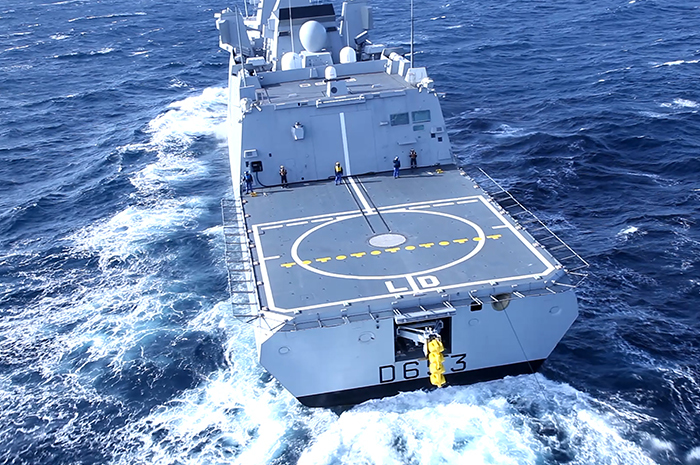Cutting-edge sonar and substantial cost savings? Yes we can
By the end of the 1980s, Eastern Bloc regimes were crumbling—and along with them the old certainties that had defined anti-submarine warfare (ASW) for decades. As new threats unfolded—and Mediterranean security and force projection took on heightened importance—the French and Italian navies’ needs evolved rapidly. Both countries were clear that they needed to substantially enhance their fleets. France was set to replace its ageing F67-class frigates, and Italy had taken the strategic decision to add Variable Depth Sonar (VDS) to its capabilities.
By the early 2000s, these needs had been framed in the joint European Multi-Mission Frigate (FREMM) Programme. Its level of ambition was formidable: the creation of a fleet of frigates equipped with cutting-edge sonar, while—at the same time—driving substantial cost savings.
To tackle these contrasting objectives, the programme’s management organisations – OCCAR, the DGA and NAVARM – turned to Thales. The company’s long experience in both hull-mounted and towed sonar, as well as its recent success in meeting the British Navy’s ASW needs for Type-23 frigates, made it well placed to satisfy the navies’ demanding requirements for technical excellence. In addition, Thales’s expertise as a systems integrator meant it could adapt the solution to the very different combat management philosophies and interface requirements of the French and Italian navies—something critical to unlocking economies of scale from a common sonar system while fully meeting country-specific needs. What’s more, the company’s close relations with a global network of specialist suppliers, and its ability to support and manage long-duration contracts, meant it could commit to the high manufacturing volumes required to drive substantial cost savings.

Drawing on its strong UK operations base, Thales organised working sessions and demonstrations that connected French and Italian naval experts with the up-to-date CDS design being produced for the British Navy . While these quickly built confidence that the solution could more than meet the programme’s strong performance needs, the real challenge would be taking design and manufacturing to a new level that could deliver the programme’s ambitious value objectives.
Recognising the scale of the challenge, Thales set about the wholesale remodelling of both the variable-depth and hull-mounted sonar systems earmarked for the FREMM frigates. It comprehensively re-engineered their components—right down to the most detailed levels; engaged experts at its UK site in Cheadle to ensure the Italian navy’s MMI interface requirements were met; and tasked Thales’s acoustic centres of excellence with adapting the sensors. This type of concerted effort, coupled with innovative approaches, like identifying and transferring relevant know-how from the rail sector for the transmitter power systems and the new breakthrough Tam Tam transducers for the Hull Mount Array, generated the sustained momentum needed to deliver across-the-programme savings.
The results are clear: 20 FREMM frigates have now been constructed, and the entry into service of Normandie, in June 2020, expands the French Navy’s FREMM fleet to six frigates engaged on anti-submarine warfare. Each is fitted with state-of-the-art sonar that’s smaller, cheaper, and more powerful than previous generations—and yet gives the frigates a lasting edge over the detection capabilities of even the most advanced submarines. The US Navy has also been impressed by the frigates’ capabilities and recently awarded the French Navy its Hook’Em award for ASW excellence.


